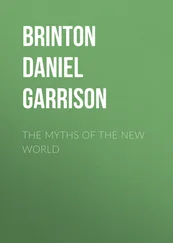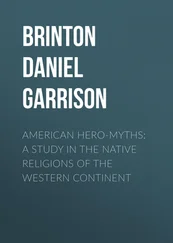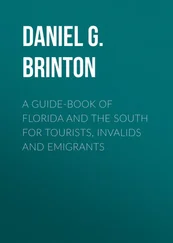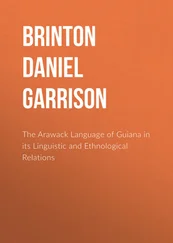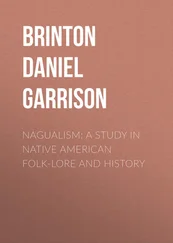Daniel Brinton - The Lenâpé and their Legends
Здесь есть возможность читать онлайн «Daniel Brinton - The Lenâpé and their Legends» — ознакомительный отрывок электронной книги совершенно бесплатно, а после прочтения отрывка купить полную версию. В некоторых случаях можно слушать аудио, скачать через торрент в формате fb2 и присутствует краткое содержание. Жанр: foreign_antique, foreign_prose, на английском языке. Описание произведения, (предисловие) а так же отзывы посетителей доступны на портале библиотеки ЛибКат.
- Название:The Lenâpé and their Legends
- Автор:
- Жанр:
- Год:неизвестен
- ISBN:нет данных
- Рейтинг книги:4 / 5. Голосов: 1
-
Избранное:Добавить в избранное
- Отзывы:
-
Ваша оценка:
- 80
- 1
- 2
- 3
- 4
- 5
The Lenâpé and their Legends: краткое содержание, описание и аннотация
Предлагаем к чтению аннотацию, описание, краткое содержание или предисловие (зависит от того, что написал сам автор книги «The Lenâpé and their Legends»). Если вы не нашли необходимую информацию о книге — напишите в комментариях, мы постараемся отыскать её.
The Lenâpé and their Legends — читать онлайн ознакомительный отрывок
Ниже представлен текст книги, разбитый по страницам. Система сохранения места последней прочитанной страницы, позволяет с удобством читать онлайн бесплатно книгу «The Lenâpé and their Legends», без необходимости каждый раз заново искать на чём Вы остановились. Поставьте закладку, и сможете в любой момент перейти на страницу, на которой закончили чтение.
Интервал:
Закладка:
Their skill in manufacturing bead work and feather mantles, and in dressing deer skins, excited the admiration of the early voyagers. Although their weapons and utensils were mostly of stone, there was a considerable supply of native copper among them, in use as ornaments, for arrow heads and pipes. Some specimens of it have been found by Dr. Abbott near Trenton, and by other collectors in Pennsylvania, [88] Footnote_88_88 Four specimens are reported from Berks Co., Pa., by Prof. D. P. Brunner, in his volume, The Indians of Berks Co., Pa. , pp. 94, 95 (Reading, 1881). These were an axe, a chisel, a knife and a gouge. The metal was probably in part obtained in New Jersey, in part imported from the Lake Superior region. See further, Abbott, Primitive Industry , chap. xxviii. Peter Kalm, the Swedish naturalist, who visited New Jersey in 1748, says that when the copper mines "upon the second river between Elizabeth Town and New York" were discovered, old mining holes were found and tools which the Indians had made use of. Travels in North America , Vol. I, p. 384.
and its scarcity in modern collections is to be attributed to its being bought up and melted by the whites rather than to its limited employment.
Soap stone was hollowed out with considerable skill, to form bowls, and the wood of the sassafras tree was highly esteemed for the same purpose (Kalm).
The maize was broken up in wooden or stone mortars with a stone pestle, the native name of which was pocohaac , a word signifying also the virile member.
Their arms were the war club or tomahawk, tomhickan , the bow, hattape , and arrow, alluns , the spear, tanganaoun , and for defence Bishop Ettwein states they carried a round shield of thick, dried hide.
The spear was also used for spearing fish, which they, moreover, knew how to catch with "brush nets," and with fish hooks made of bone and the dried claws of birds (Kalm). [89] Footnote_89_89 Some antiquaries appear to have doubted whether the spear was in use as a weapon of war among the Pennsylvania Indians. (See Abbott, Primitive Industry , p. 248.) But the Susquehannocks are distinctly reported as employing as a weapon "a strong and light spear of locust wood." Relatio Itineris in Marylandiam , p. 85.
The paints and dyes used by the Lenape and neighboring Indians were derived both from the vegetable and mineral realms. From the former they obtained red, white and blue clays, which were in such extensive demand that the vicinity of those streams in New Castle county, Delaware, which are now called White Clay Creek and Red Clay Creek, was widely known to the natives as Walamink , the Place of Paint.
The vegetable world supplied a variety of dyes in the colored juices of plants. These were mixed with the acid juice of the wild, sweet-scented crab apple ( Pyrus coronaria ; in Lenape, tombic'anall ), to fix the dye.
A red was yielded by the root of the Sanguinaria Canadensis , still called "Indian paint root;" an orange by the root of Phytolacca decandra , the poke or pocoon; a yellow by the root of Hydrastis Canadensis ; a black by a mixture of sumac and white walnut bark, etc. [90] Footnote_90_90 For further information on this subject, an article may be consulted in the Transactions of the American Philosophical Society , 1st Ser., Vol. III, pp. 222, et seq., by Mr. Hugh Martin, entitled "An Account of the Principal Dies employed by the American Indians."
The only domestic animal they possessed was a small species of dogs with pointed ears. These were called allum , and were preserved less for protection or for use in hunting than for food, and especially for ceremonial purposes. [91] Footnote_91_91 The Delawares had three words for dog. One was allum , which recurs in many Algonkin dialects, and is derived by Mr. Trumbull from a root signifying "to lay hold of," or "to hold fast." The second was lennochum or lenchum , which means "the quadruped belonging to man;" lenno , man; chum , a four-footed beast. The third was moekaneu , a name derived from a general Algonkin root, in Cree, mokku , meaning "to tear in pieces," from which the Delaware word for bear, machque , has its origin, and also, significantly enough, the verb "to eat" in some dialects.
The custom of common ossuaries for each gens appears to have prevailed among the Lenape. Gabriel Thomas states that: "If a person of Note dies very far away from his place of residence, they will convey his Bones home some considerable Time after, to be buried there." [92] Footnote_92_92 History of West New Jersey , p. 3 (London, 1698).
Bishop Ettwein speaks of mounds for common burial, though he appears to limit their use to times of war. [93] Footnote_93_93 Bulletin Hist. Soc. of Penna. , 1848, p. 32.
One of these communal graveyards of the Minsis covers an area of six acres on the Neversink creek, [94] Footnote_94_94 E. M. Ruttenber, History of the Indian Tribes of Hudson River , p. 96, note.
while, according to tradition, another of great antiquity and extent was located on the islands in the Delaware river, above the Water-Gap. [95] Footnote_95_95 Maximilian, Prince of Wied, Travels in America , p. 35.
The accuracy with which the natives computed time becomes a subject of prime consideration in a study of their annals. It would appear that the Eastern Algonkins were not deficient in astronomical knowledge. Roger Williams remarks, "they much observe the Starres, and their very children can give names to many of them;" [96] Footnote_96_96 A Key into the Language of America , p. 105.
and the same testimony is borne by Wassenaer. The latter, speaking of the tribes around New York Harbor, in 1630, says that their year began with the first moon after the February moon; and that the time for planting was calculated by the rising of the constellation Taurus in a certain quarter. They named this constellation the horned head of some great fictitious animal. [97] Footnote_97_97 Documentary History of New York , Vol. III, pp. 29, 32.
Zeisberger observes that, in his day, the Lenape did not have a fixed beginning to their year, but reckoned from one seeding time to another, or from when the corn was ripe, etc. [98] Footnote_98_98 Grammar of the Language of the Lenni Lenape , pp 108-109.
Nevertheless, they had a word for year, gachtin , and counted their ages and the sequence of events by yearly periods. The Chipeways count by winters ( pipun-agak , in which the first word means winter, and the second is a plural form similar to the Del. gachtin ); but the Lenape did not apparently follow them in this. They recognized only twelve moons in the year and not thirteen, as did the New England nations; at least, the names of but twelve months have been preserved. [99] Footnote_99_99 They are given, with translations, in Zeisberger's Grammar , p. 109.
The day periods were reckoned usually by nights, but it was not improper to count by "suns" or days.
The picture writing of the Delawares has been quite fully described by Zeisberger, Loskiel and Heckewelder. It was scratched upon stone (Loskiel), or more frequently cut in or painted upon the bark of trees or pieces of wood. The colors were chiefly black and red. The system was highly conventionalized, so that it could readily be understood by all their tribes, and also by others with whom they came in contact, the Shawnees, Wyandots, Chipeways, etc.
Читать дальшеИнтервал:
Закладка:
Похожие книги на «The Lenâpé and their Legends»
Представляем Вашему вниманию похожие книги на «The Lenâpé and their Legends» списком для выбора. Мы отобрали схожую по названию и смыслу литературу в надежде предоставить читателям больше вариантов отыскать новые, интересные, ещё непрочитанные произведения.
Обсуждение, отзывы о книге «The Lenâpé and their Legends» и просто собственные мнения читателей. Оставьте ваши комментарии, напишите, что Вы думаете о произведении, его смысле или главных героях. Укажите что конкретно понравилось, а что нет, и почему Вы так считаете.




